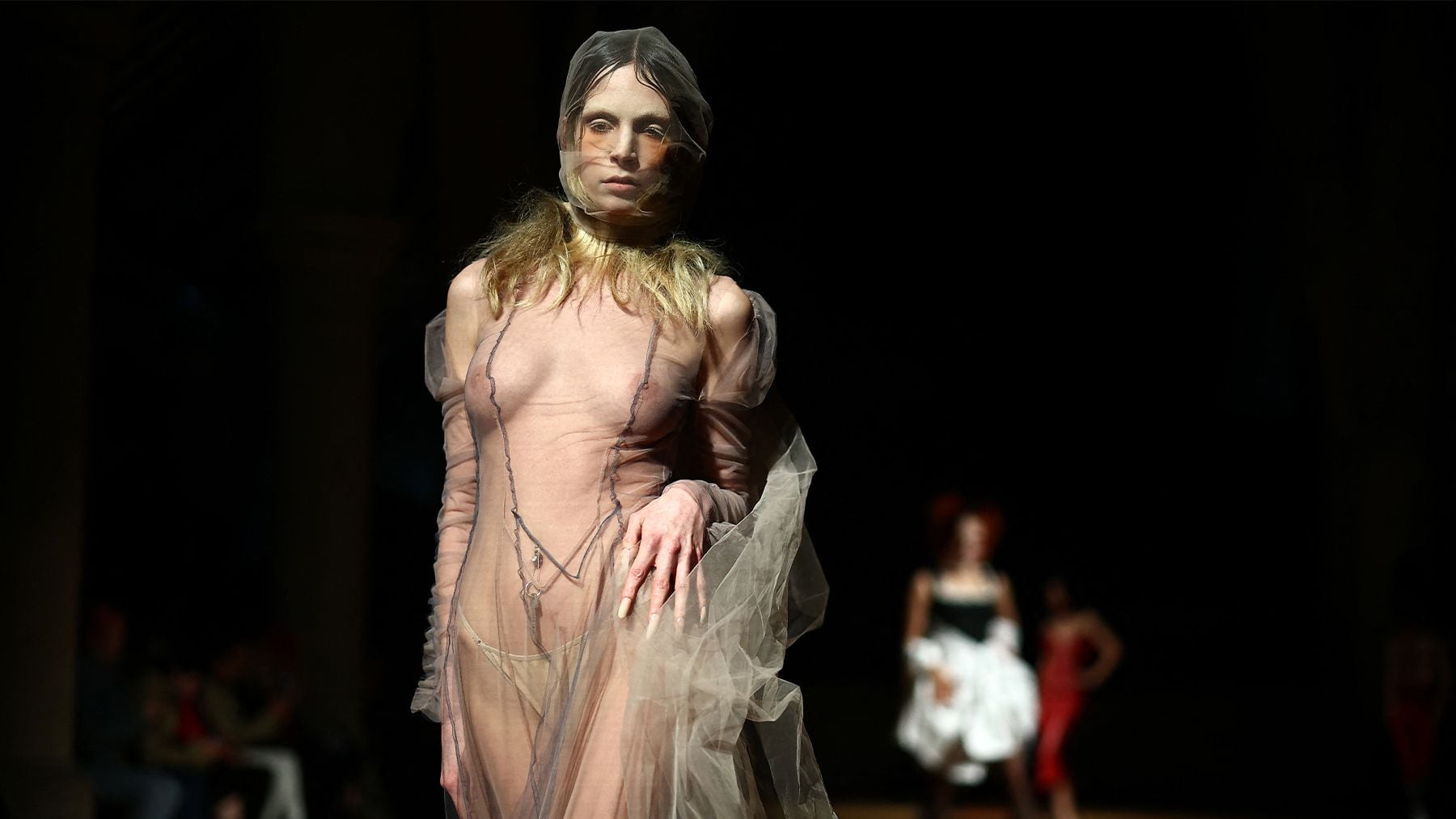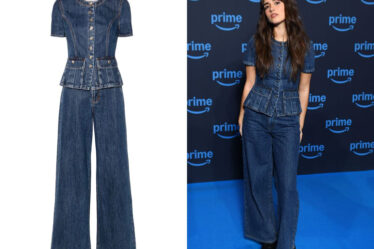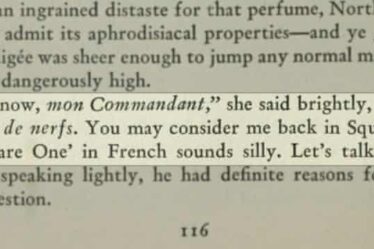
LONDON â London Fashion Week is celebrating its fortieth birthday and the local media is awash with high points from its history: Alexander McQueenâs mind-altering âVossâ show, John Gallianoâs âLes Incroyablesâ collection, Hussein Chalayanâs transformative furniture outing and, in the late noughties, a wave of designers â Christopher Kane, Jonathan Anderson, Erdem MoralıoÄlu â that cemented Londonâs status as the birthing ground of top fashion talent.
London is still a hotbed of design talent. But there was a sense of gloom hanging over the latest London Fashion Week, as a slowdown in luxury demand and the faltering of leading e-tailers, many of them based here, pummelled the cityâs emerging designers.
âWhen online stores are facing some of their biggest crises of recent times, and with an economy that is unstable, how will labels respond and, more importantly, survive?â pondered Stavros Karelis, founder of Machine-A, on Sunday night.
Some of Londonâs most talented young designers decided not to stage runway shows this season. Supriya Lele presented her slinky foil mini-dresses, iridescent strapless shifts and moto short-shorts via a lo-fi lookbook, shot in a disused pharmacy space in South London, as well at a Sunday brunch in Soho organised by stylist Katie Grand.
Emma Chopova and Laura Lowena, too, opted for a lookbook instead of a show, confident in the online fanbase and direct-to-consumer channel they have built for their Chopova Lowena label. Meanwhile, Nensi Dojaka skipped this season entirely as she restructures her company.
Many of those that did invest in events aimed to maximise impact. On Friday, jewellery brand Completedworks scored headlines when Joanna Lumley of âAb Fabâ fame delivered a hilarious soliloquy at its presentation. The next day, SRVC Studio, designed by Wesley Harriott, had girls walk up and down three double-decker buses. On Monday, Susan Fang sent giant bubbles through the air to compliment her bubble-esque pastel textures and aerated fabrics.
Fear of a corporate monster was clearly on the minds of some of Londonâs up and comers. At the Central Saint Martins MA show on Friday, Johnathan Ferris had city boys in suits march out donning eerie rubber masks cast from the designerâs face. These salarymen clones were meant to represent the fear of failing as a designer and having to work 9-to-5 instead. But you also got the feeling that many of this yearâs crop of MA graduates would be grateful for full-time employment with their rack-ready collections. Sinead OâDwyerâs collection of signature shirred bodysuits and twisted tailoring was titled âSupervisor.â Howâs that for corporate undertones?
Johanna Parv broadened out her fast lane cycle gear to office-ready late-90s minimal suiting as she readied her brand to fly the Fashion East nest. Even 16 Arlington, once known for a sparkly party frock, got down to business with grey suiting, albeit with a flash of tinsel.
But at a time when formal suits are rare in most workplaces, the subversion of office attire felt pointed. On the flipside, whatâs London without a dose of club culture kink? Olly Shinder answered the call, elevating his Berghain-ready ensembles by pummelling serious craft into latex workwear. Work hard, play harder?
While some were busy sticking two fingers up at the man, Jonathan Anderson was happy to retreat into cosy tactility. But the blown-up yarn knits, sloped shouldered tweed jackets and pointelle thermal undies came with a twist: they belonged to a weird nosy neighbour (weâve all got one!) with a poodle grey perm wig hat and too-bright lipstick. Dark comedy sitcom âThe League of Gentlemenâ came to mind, but it all served to nicely showcase the brandâs staples: twisted trench coats, statement knitwear and sturdy flat shoes with a difference.
Harris Reed yearned for tactility, too. He sponged down archival silk wallpapers to create delicate embroidery for his signature sculptural demi-couture. This painstaking technique worked wonders and brought print and pattern to the designerâs approach.
Paolo Carzana is dedicated to the cause of slow fashion with his hand-dyed, hand-manipulated textiles, which this season were moulded into human rocks in delicate shades of orange, mauve and inky black, all part of a âmelanchronicâ climb up a figurative mountain as the weight of the world hung heavy on Carzanaâs mind. There was light at the summit though. âItâs so hard to try and be positive but we can,â the designer said backstage.
Kazner Asker, a British Yemeni graduate from Central Saint Martins, presented modest hybrids of nylon tracksuits and Islamic hijabs and abayas, layered with panels of fabrics of Middle Eastern origin. They arenât going to be produced, she said, but instead kickstart fundraising for Yemen and Palestine. Few designers have overtly expressed a âFree Palestineâ sentiment as Asker has. Does she fear a backlash? âI prioritise sincerity over everything,â she said.
Elsewhere, British Nigerian designer Tolu Coker brought West Africa to London with sustainably-made street hawker-style uniforms. Thirty years of UK garage inspired Saul Nash to take us to the club â cue bouncers, MC Bushkin and two-step choreography â and his well-engineered sportswear gave off a âyouâre on the listâ vibe. Ahluwalia delved deep into Indian-Nigerian folklore, but the results were uneven, her womenswear less convincing than her menâs. Chet Loâs Terracotta Army collection read as armour for testing times â gritty brick red, samurai black and steely silver â but youâre always in for a good time in Loâs spiky knits. 80s power shoulders gave KNWLSâ signature leathers a new attitude but the curious addition of mohair knits, leggings and jersey dresses looked off-brand.
At Dunhill, a cast of suave, well-heeled-looking men â not boys â strode around a salon style presentation in the National Portrait Gallery. Designer Simon Holloway made a strong case for the enduring appeal of traditional English menswear, drawing on the labelâs tailoring expertise and history dressing clients like Frank Sinatra and Truman Capote.
Huishan Zhang cuts a beautiful dress and this season shimmering satin evening wear was sheathed with noir tulle and crystal embellished organza was layered over cloque shifts, giving range to his customer. Emilia Wickstead keyed into the seasonâs penchant for a moodier palette of burgundy (the Gucci Ancora effect!), brown and charcoal. Richard Quinn leaned into bridal, with full-skirted, heavy embellished dresses for the big day. It was a savvy move, especially as social media fuels demand for multiple wedding outfits. Quinn is here to create the one.
Staying relevant in London is a hard slog and London Fashion Weekâs head boys and girls, who have surpassed the ten year mark, have done so by maintaining sharp focus. This season, Roksanda IlinÄiÄ played to her strengths once again with a tightly edited show that was inspired by Corbusierâs modest cabin in the South of France and got to the very heart of her label. âI wanted to strip everything down to what weâre all about, and what felt essential,â she said. In Roksandaâs world that meant stripping back to a vibrant colour palette, bouncing hoop structured skirts and interiors-derived mural tapestries that enveloped the body like blankets.
Erdem MoralıoÄlu is no wallflower either. A virtuoso soprano belting it out in Room 18 of the British Museum, home to the Elgin Marbles, was a beautiful if controversial backdrop for the designerâs musings on Maria Callas, as fabrics frayed and feathered satin pyjamas wafted by. Itâs hard to fault MoralıoÄluâs decision to mine the life of the Greek opera star, with its glamorous highs and tragic lows, especially when done with such conviction and depth.
Against a mural by Ivon Hitchens at the English Folk Dance and Song Society, Molly Goddard showed an effortlessly accomplished collection that was laser-focused from the outset because Goddard knew sheâd be absent for a few months, after the birth of her second child, and had no time to muck about. Her âblobs on blobsâ and âsmushed up shapesâ had purpose and pace in zesty shades of fuschia and burgundy. Tops layered with skirts that puffed out and pulled in at all the right places demonstrated Goddardâs confidence in her well-honed techniques.
MarquesâAlmeida was one of the big draws of London Fashion Week in the 2010s. During the pandemic, Marta Marques and Paolo Almeida moved back to their hometown of Porto, Portugal to be closer to family and hadnât shown in London again until today. Once steeped in grunge-fuelled youth, the MarquesâAlmeida cast is back in all ages, from toddler to a grandma, and it was touching to see this acknowledgement of real life as the label delivered its signature wardrobe of destroyed denim, casual jacquards and voluminous dresses.
The last time Simone Rocha showed at the mediaeval church of St Bartholomew the Great, she was ruminating on birth and motherhood. This time, we were at a wake, rounding off a triptych of collections that began with Spring-Summer 2024â²s dress rehearsal and was followed by Rochaâs spellbinding outing as Jean Paul Gaultierâs guest designer a few weeks ago. The starting point for the collection may have been Queen Victoriaâs mourning clothes, but a flurry of fanciful touches lightened the proceedings, namely faux fur accents that were blown up into voluminous coats, cheeky short shorts peeking out from sheer dresses and a carryover of the corsetry from the Gaultier collection. Many of the models clutched furry little lambs which Rocha called her church grims or guardian spirits. But they distracted from the mood.
In another historic East London church, Dilara FındıkoÄlu was busy creating a new world order, one where the patriarchy is destroyed and devoured. After the explosion of love for John Gallianoâs epic Maison Margiela Artisanal show last month, it made sense designers would try to recreate similar moments. FındıkoÄlu employed Pat Boguslawski, Gallianoâs movement director, to bring drama to the proceedings. Instead of broken dolls, though, FındıkoÄluâs women were dangerous sirens in extreme corsetry, sharp tailoring and lacquered panier dresses with a take-no-prisoners vibe. âTheyâre supposed to be intimidating,â the designer said.
In a more gentle celebration of strong women, Yuhan Wang paid homage to prominent female legal minds: Ruth Bader Ginsberg, Dame Rose Heilbron and Brenda Hale. Who knew judgesâ gowns could be coquettish and cute?
Times may be tough but Conner Ives is still dreaming big. The designer is building his brand around upcycling and figuring how to scale that up. âWeâve gotten to a point where weâve had to almost industrialise the upcycling,â he said. His offering of manipulated vintage t-shirts and bias cut piano shawl gowns was stripped back this season, inspired by Capoteâs âSwans,â though he said the synchronicity with the release of the FX television series âFeud: Capote vs The Swansâ was purely coincidental. Ivesâ kind of swans were another breed: nonchalant in a 300-year-old silk hanging minidress over military surplus trousers. The bride wore a transparent gown embroidered with discarded headphone components, found next door to Ivesâ embroidery workshop in Kolkata, India. Wired headphones along with 2000s era camcorders and digi-cams have of course been resurrected as Gen-Zâs techware of choice.
Aaron Esh, who made a name for himself with his sensual menswear, has fully committed to womenswear in order to âconvince the audience of the Aaron Esh world.â At a show held at the Sarabande Foundation, Esh aimed high by referencing mid-century Dior and Balenciaga shapes, contrasted with pulled up hoodies, track pants and a steely attitude for the cold walk home after a night out in East London. Call it hungover chic. âI want this to be the collection that changes the trajectory in my career,â he said. Standing in the cold in Haggerston outside the show space, you hoped Eshâs words would ring true, for his sake â and for Londonâs.
You cannot exclude Burberry from London Fashion Weekâs glory years, particularly under the tenure of Christopher Bailey, with his confetti-raining tents and starry music performances. Canny that there was a whiff of Bailey at Daniel Leeâs third show for the British megabrand. Different tent, different park, of course, but the parade of strong outerwear, waxed jacket skirts, long kilts and oversized bags felt like a pragmatic return to Burberryâs raison dâêtre. The cast of 2010s âEnglish roseâ faces including Agyness Deyn, Lily Donaldson and Lily Cole, and the Amy Winehouse soundtrack only hammered home the Bailey-era feeling. More importantly, as the models trudged along a winding runway covered in green wood chips, you could see the clothes walk straight out into the open green of Vicky Park and beyond. A welcome redux.


